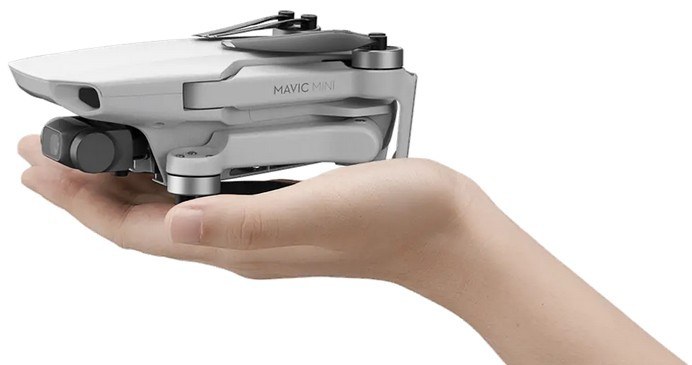
About The DJI Mavic Mini – A Powerful Drone Packed Into A 249 Gram Package
October 30, 2019As you probably know by now, I tend to get a little excited when DJI announces some new event or actually releases a new drone. I get anxious when they announce an event and shroud it in secrecy and excited when I finally find out what it’s all about.
This time around, I didn’t get anxious and write a long post about what the next release could be. Instead, I wrote a post on DJI Rumors – Exciting Possibilities for 2019 and Beyond, which covered a variety of rumors and expected release dates.
In the past, I would have dedicated one or more posts about what we know, what we’re hoping for, and so on. Many times we were spot-on or very close to reality and others, well, we were way off. As exciting as speculation can be, nothing beats the actual truth.
Today, DJI officially released a new product, and this post is all About The DJI Mavic Mini. I’ll tell you about it, where it fits in, go over the specs and compare it to DJI’s other models.
Table of Contents
By the time you’ve finished reading this post, I hope you’ll have a good idea of whether the DJI Mavic Mini is the right fit for you. Let’s get started…
THIS POST MAY CONTAIN AFFILIATE LINKS. PLEASE SEE MY AFFILIATE DISCLOSURE FOR MORE INFORMATION.
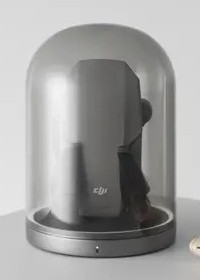 Tell Me About The DJI Mavic Mini
Tell Me About The DJI Mavic Mini
The Mavic Mini is DJI’s way of being able to produce a drone that flies in just under the FAA’s registration requirement based on weight. As many of you know, the FAA has mandated that drones weighing more than 250 grams, and less than 55 pounds must be registered with the FAA. You can find out more about this here.
Weighing in at just 249 grams, the DJI Mavic Mini doesn’t fall under the registration requirement. Thus, this consumer drone bypasses an inconvenience that may otherwise keep someone from getting into the droning world.
Let’s face it; people can be lazy. If there’s some requirement to register before you can fly, they may move onto the next shiny object instead. DJI was smart to cut out a little red tape.
In the next sections, I’ll dive a bit deeper into the Mavic Mini and go over specs, where it fits in, and how it compares to DJI’s other offerings…
 Let’s Talk Specs
Let’s Talk Specs
Let me start by saying, I don’t have one of these yet. As such, I can’t manually confirm the specs listed. These are taken directly from DJI’s website:
Aircraft
- Takeoff Weight [1] – 249 g / 199 g (JP)
- Dimensions – Folded: 140×82×57 mm (L×W×H)Unfolded: 160×202×55 mm (L×W×H)Unfolded (with propellers): 245×290×55 mm (L×W×H)
- Diagonal Distance – 213 mm
- Max Ascent Speed – 4 m/s (S Mode)2 m/s (P Mode)1.5 m/s (C Mode)
- Max Descent Speed – 3 m/s (S Mode)1.8 m/s (P Mode)1 m/s (C Mode)
- Max Speed (near sea level, no wind) – 13 m/s (S Mode)8 m/s (P Mode)4 m/s (C Mode)
- Max Service Ceiling Above Sea Level – 3000 m
- Max Flight Time – 30 minutes (measured while flying at 14 kph in windless conditions)18 minutes for JP (measured while flying at 12 kph in windless conditions)
- Max Wind Speed Resistance – 8 m/s (Scale 4)
- Max Tilt Angle – 30° (S Mode)20° (P Mode)20° (C Mode)
- Max Angular Velocity – 150°/s (S Mode)130°/s (P Mode)30°/s (C Mode)
- Operating Temperature Range – 0° to 40°C (32° to 104°F)
- Operating Frequency – Model MT1SS5: 5.725-5.850 GHzModel MT1SD25: 2.400-2.4835 GHz, 5.725-5.850 GHz
- Transmission Power (EIRP) – Model MT1SS55.8 GHz: <30 dBm (FCC); <28 dBm (SRRC)Model MT1SD252.4 GHz: <19 dBm (MIC/CE)5.8 GHz: <14 dBm (CE)
- GNSS – GPS+GLONASS
- Hovering Accuracy Range – Vertical: ±0.1 m (with Vision Positioning), ±0.5 m (with GPS Positioning)Horizontal: ±0.1 m (with Vision Positioning), ±1.5 m (with GPS Positioning)
Gimbal
- Mechanical Range – Tilt: -110° to 35°Roll: -35° to 35°Pan: -20° to 20°
- Controllable Range – Tilt: -90° to 0° (default setting) -90° to +20° (extended)
- Stabilization – 3-axis (tilt, roll, pan)
- Max Control Speed (tilt) – 120°/s
- Angular Vibration Range – ±0.01°
Sensing System
- Downward – Operating Range: 0.5-10 m
- Operating Environment – Non-reflective, discernible surfacesDiffuse reflectivity (>20%)Adequate lighting (lux>15)
Camera
- Sensor – 1/2.3” CMOSEffective Pixels: 12 MP
- Lens – FOV: 83°35 mm Format Equivalent: 24 mm Aperture: f/2.8Shooting Range: 1 m to ∞
- ISO Range – Video:100-3200 (Auto)Photo:100-1600 (Auto)100-3200 (Manual)
- Shutter Speed – Electronic Shutter: 4-1/8000s
- Still Image Size – 4:3: 4000×300016:9: 4000×2250
- Still Photography Modes – Single-shot Interval: 2/3/5/7/10/15/20/30/60 s
- Video Resolution – 2.7 K: 2720×1530 25/30 pFHD: 1920×1080 25/30/50/60 p
- Max Video Bitrate – 40 Mbps
- Supported File System – FAT32(≤32 GB)exFAT(>32 GB)
- Photo Format – JPEG
- Video Format – MP4 (H.264/MPEG-4 AVC)
Remote Controller & Video Transmission
- Operating Frequency – Model MR1SS5: 5.725-5.850 GHzModel MR1SD25: 2.400-2.4835 GHz, 5.725-5.850 GHz
- Max Transmission Distance (unobstructed, free of interference) – Model MR1SS55.8 GHz: 4000 m (FCC); 2500 m (SRRC)Model MR1SD252.4 GHz: 2000 m (MIC/CE)5.8 GHz: 500 m (CE)
- Operating Temperature Range – 0° to 40°C (32° to 104°F)
- Transmission Power (EIRP) – Model MR1SS55.8 GHz: <30 dBm (FCC); <28 dBm (SRRC)Model MR1SD252.4 GHz: <19 dBm (MIC/CE)5.8 GHz: <14 dBm (CE)
- Battery Capacity – 2600 mAh
- Operating Current/Voltage – 1200 mA 3.6 V (Android)700 mA 3.6 V (iOS)
- Supported Mobile Device Size – Max length: 160 mm Max thickness: 6.5-8.5 mm
- Supported USB Port Types – Lightning, Micro USB (Type-B), USB-C (Type-C)
- Video Transmission System – Enhanced Wi-Fi
- Live View Quality – 720p/30fps
- Max. Bitrate – 4 Mbps
- Latency (depending on environmental conditions and mobile device) – 170-240 ms
Charger
- Input – 100-240 V, 50/60 Hz, 0.5A
- Output – 12V 1.5 A / 9V 2A / 5V 3A
- Rated Power – 18 W
Intelligent Flight Battery
- Capacity – 2400 mAh
- Voltage – 7.2 V
- Max Charging Voltage – 8.4 V
- Battery Type – Li-ion 2S
- Energy – 17.28 Wh
- Net Weight – 100 g
- Charging Temperature Range – 5° to 40°C (41° to 104°F)
- Max Charging Power – 24 W
Intelligent Flight Battery (1100 mAh)
- Capacity – 1100 mAh
- Voltage – 7.6 V
- Max Charging Voltage – 8.7 V
- Battery Type – LiPo 2S
- Energy – 8.36 Wh
- Net Weight – 50 g
- Charging Temperature Range – 5° to 40°C (41° to 104°F)
- Max Charging Power – 18 W
APP
- Name – DJI Fly
- Required Operating System – iOS v10.0 or later Android v6.0 or later
Supported SD Cards
- UHS-I Speed Class 3 or above is required. A list of recommended microSD cards can be found below.
- Recommended microSD Cards – 16 GB: SanDisk Extreme, Lexar 633×32 GB: Samsung Pro Endurance, Samsung Evo Plus, SanDisk Industrial, SanDisk Extreme V30 A1, SanDisk Extreme Pro V30 A1, Lexar 633x, Lexar 667×64 GB: Samsung Pro Endurance, Samsung Evo Plus, SanDisk Extreme V30 A1, Lexar 633x, Lexar 667x, Lexar 1000x, Toshiba EXCERIA M303 V30 A1, Netac Pro V30 A1128 GB: Samsung Pro Plus, Samsung Evo Plus, SanDisk Extreme V30 A1, SanDisk Extreme Plus V30 A1, Lexar 633x, Lexar 667x, Lexar 1000x, Toshiba EXCERIA M303 V30 A1, Netac Pro V30 A1256 GB: SanDisk Extreme V30 A1
Footnotes
- 1. Aircraft takeoff weight (includes battery and propellers). Registration not required in some countries and regions. Check local rules and regulations before use. These specs have been determined through tests conducted with the latest firmware. Firmware updates can enhance performance, so updating to the latest firmware is highly recommended.
As you can see, for a tiny aircraft, there’s quite a bit of capability packed inside. Now let’s see where the DJI Mavic Mini fits in…
 Where Does The Mavic Mini Fit In?
Where Does The Mavic Mini Fit In?
OK, so we have a new, compact drone. Where exactly does it fit in? Let’s take a look and see…
First off, this drone is aimed at the consumer market. As such, it’s already outside of the professional range (i.e., Movie productions, etc.). The 2.7K video recording at the high end and the 40 Mbps data rate knock it out of the running for professional video needs. That said, there still may be use cases for such a compact drone in some scenarios, but you’re probably better off with a Mavic series drone at that point.
The DJI Mavic Mini falls into two categories; toy/plaything and ultra-compact travel drone.
Toy/Plaything
With the focus being on weight, DJI wanted to make sure that the recreational market was served in a way that reduced the difficulty/paperwork required to fly their drone. Now people can buy the bird and just start flying (assuming they’re in uncontrolled airspace) without having to register their aircraft and place registration markings on it.
Ultra-Compact Travel Drone
People were amazed at how small the DJI Mavic Pro was when folded up. Then DJI took it further and created the Mavic Air, a slightly smaller yet quite capable drone. Now they’ve gone even smaller with the Mavic Mini. For the true, on-the-go traveler, this might be the perfect drone.
These are the two use-cases I can think of. There might be more, but I’m pretty sure most will fall under these two. Now, let’s see how the Mavic Mini compares to DJI’s other models…
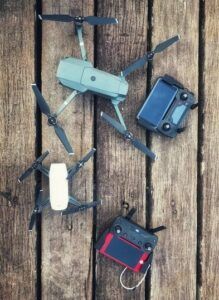 How Does It Compare To DJI’s Other Models?
How Does It Compare To DJI’s Other Models?
This is really what most people seem to want to know. “I have the <enter drone model here>. Should I get the Mavic Mini?” The answer to that depends on your wants and needs. Before we get to that part of the discussion, let’s compare a few specs that matter to most people:
Weight
By far, the Mavic Mini wins in this category (assuming lighter is better). Here’s a comparison:
- Mavic Mini – 249 grams
- Mavic Pro – 734 grams
- Mavic 2 Pro – 907 grams
- Phantom 4 Pro v2.0 – 1375 grams
Still and Video Specs
This is where the Mavic Mini doesn’t shine (I will only list the highest resolutions and frame rates here. Each drone offers multiple resolutions and frame rates):
- Mavic Mini
- Stills – 1/2.3″ CMOS – 12 MP
- Video – 2.7K @ 30 fps
- Mavic Pro
- Stills – 1/2.3″ CMOS – 12.35 MP
- Video – C4K @ 24 fps
- Mavic 2 Pro
- Stills – 1″ CMOS – 20 MP
- Video – 4K @ 30 fps
- Phantom 4 Pro v2.0
- Stills – 1″ CMOS – 20 MP
- Video – C4K @ 30 fps
Flight Time
Interestingly enough, the Mavic Mini holds its own, if not does better, when it comes to flight time:
- Mavic Mini – 30 minutes
- Mavic Pro – 27 minutes
- Mavic 2 Pro – 31 minutes
- Phantom 4 Pro v2.0 – 30 minutes
Range
This category shouldn’t apply to most people (after all, we’re supposed to keep a line of sight and so on). That said, there may be some use cases where the range is of utmost importance:
- Mavic Mini – 4000 meters
- Mavic Pro – 4.3 miles
- Mavic 2 Pro – 8000 meters
- Phantom 4 Pro v2.0 – 4.3 miles
Obstacle Avoidance
When it comes to miniaturizing, something has to go. That’s the case here with the Mavic Mini. It only offers downward sensing:
- Mavic Mini – Downward
- Mavic Pro – Forward & Downward
- Mavic 2 Pro – Forward, Backward, Upward, Downward & Sides
- Phantom 4 Pro v2.0 – Forward, Backward & Downward
Consider the comparisons above and give each one a weight based on your needs. This will help you decide if the Mavic Mini is a good fit for you or not. This, of course, assumes you have another drone already. If not, the comparisons above should help you select the drone that’s best for your needs.
Price plays a role too. The Mavic Mini is significantly less expensive than the other models listed here. Don’t forget that when making your comparison.
Conclusion
So, that’s everything I know About The DJI Mavic Mini. What do you think?
If you’re planning to get one, consider following this link and getting it direct from DJI.
You can also grab it from Best Buy:
DJI Mavic Mini:
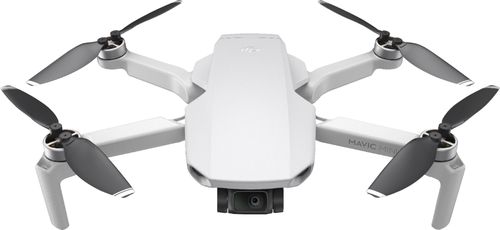
DJI Mavic Mini Fly More Bundle:
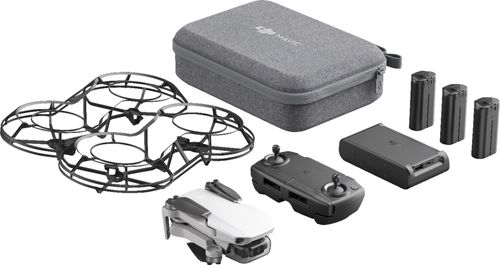
or Amazon:
For me, the Mavic Mini doesn’t meet my needs. If i did more traveling and hiking, I’d consider it, but I’m more focused on image quality with portability being a secondary consideration. I should swap my Mavic Pro out for a Mavic 2 Pro but I’m waiting for the Mavic 3 which is rumored to be released at the end of January, 2020.
Although I see the need for the Mavic Mini, I just don’t see it fitting my needs/style. Now I’d love to hear from you…
What do you think About The DJI Mavic Mini? Do you have a use for it? is there a use case or feature I didn’t cover? Will you be getting one? Let me know by commenting below.
Thank you,
Scott Hinkle
MavicManiacs.com
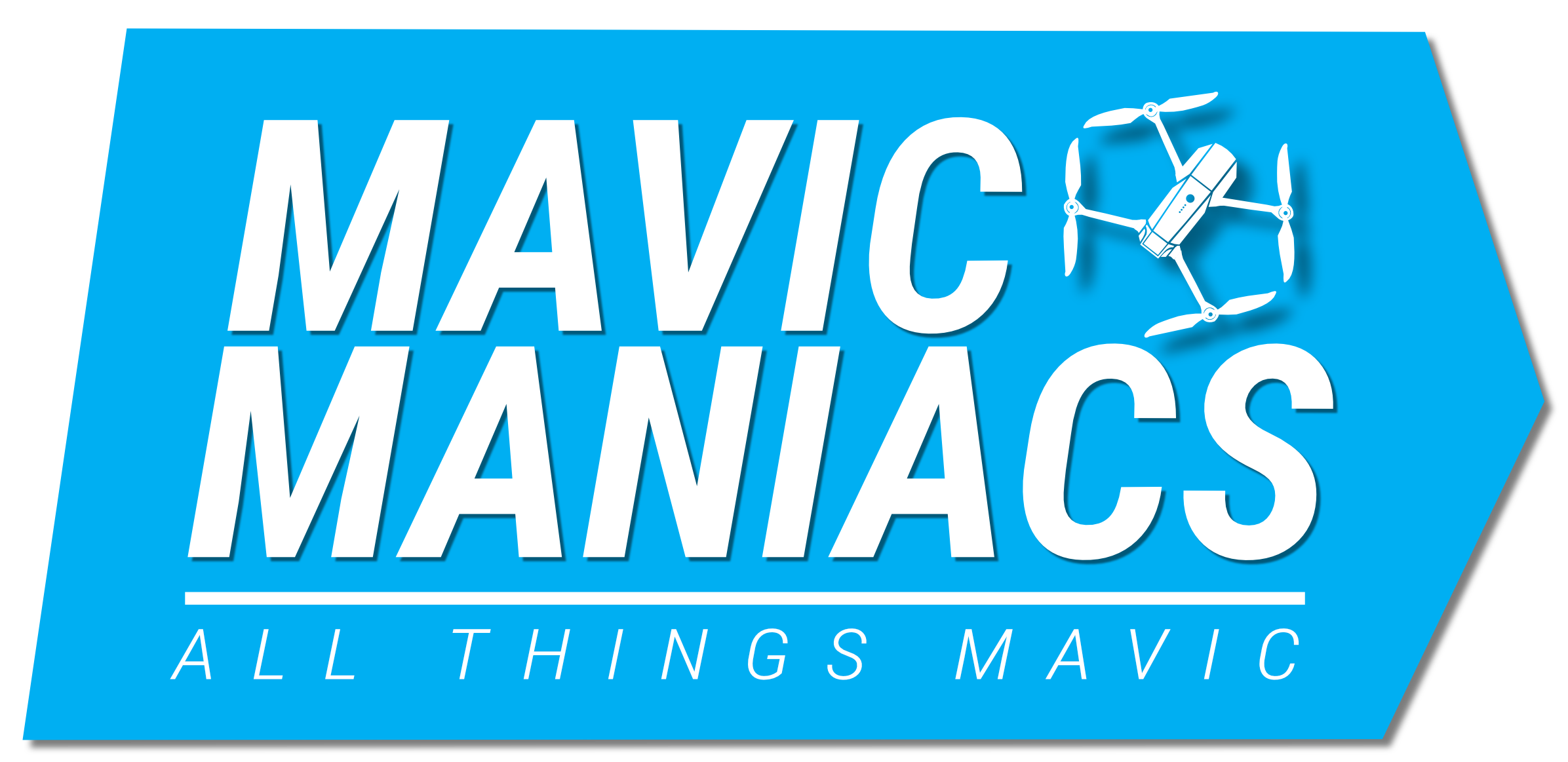



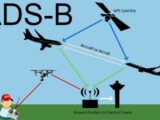


Wow, that DJI Mavic Mini drone is super sleek looking!! The price is right and the size is awesome, but it’s too bad that it seems to lose a few points comparitively when it comes to the features that are included.
Like you, I am concerned about image quality, so I’m not sure if it would make sense for me to go with this lighter and more compact option, or stick with something that really excels in the image quality department.
Thanks for the in-depth review!!
It totally see where you’re coming from but something has to give when you cut space and weight down. For its target audience, I think the Mavic Mini is a great option.
Obstacle avoidance is important to me, not because I don’t keep my bird in line of sight but because I may focus on the screen too much at times and not realize I’m backing into something (see my post Mavic vs Tree) so it’s an important feature for me.
Like you, image quality is my main focus. The jobs I do are all about getting the shot and making the shot the best that it can be. That’s what rules the Mavic Mini out for me.
Thank you for commenting,
Scott
Well I’m not particularly into drones so I don’t know about all the specifics that it entails. However you did bring to my attention the fact that when someone purchases a drone it has to be registered. Why is that? And where would restricted airspace be?
I did know that the government uses drones but I also thought they were for recreational use as well? Is there a drone that I can purchase that doesn’t meet the requirements of having to be registered? One that I can just play with and practice my flying on?
Hello,
Not all drones have to be registered. Any that fall under the 250 gram weight limit do not need to be. That said, all pilots, recreational or commercial, need to be aware of the airspace they are flying in.
There are areas of controlled airspace and areas of uncontrolled airspace. There are apps that can help you figure out where you are and what restrictions may apply to you.
Check out my posts on AirMap and B4UFly apps for more information.
Thanks for taking the time to comment,
Scott
Wow, great article.
I’m looking to buy a drone. Looks like DJI Mavic Mini is fit for me. This drone is really small and its weight is super low, making it perfect for traveling…
12 MP stills and 30 minutes of flight time is perfect for that price range and it’s enough for me to get awesome clips.
I will definitely buy this soon.
Thank you for sharing everything about the DJI Mavic Mini drone…Keep it up!
Hello and thank you.
Do me a favor… When you do get it, let me know what you think of it and share a few shots too!
Thanks for commenting,
Scott
I’m not a tech person, but the way you have everything written out helps explain what level it is for so well. I love the way you explained the difference between the models and what all they do.
The layout of your site is really cool with so many interesting posts!
My son would love one of these DJI Mavic Mini’s.
Hello,
I’m glad that you found my post easy to read and that it explained/compared the various options for you.
The Mavic Mini is an excellent drone, especially for a newbie. Looks like you might have a birthday/Christmas gift in mind :).
Scott
Thank you for your post. It is informative and timely article for me. I am hiking enthusiasm and like to take picture while hiking. I would like to take drone with me to take some picture.
Here comes your article. The price of the drone is in my budget range. The main reason for me is to take high quality picture from sky. As described by you, the quality of the picture and video may not be high. I need to do more research on this. I bookmarked your webpage and will take some time to perform more investigation on this.
It is kind of you spending your precious time following the trend of drone market and sharing the valuable information with us.
Hello there,
I’m glad you found my article useful. I do think the Mavic Mini would be a great fit for a hiker looking to get quality shots in a small package.
Thanks for bookmarking my post.
Scott
Wow! Great job Scott!
I am not a tech person and I am not into drones at all.
I think this review is superb. Anyone who is into drones or looking to buy one will be thrilled with this article. Readable, and simple to follow.
Thanks for sharing!
Thank you.
I try to provide the information people are looking for.
Scott